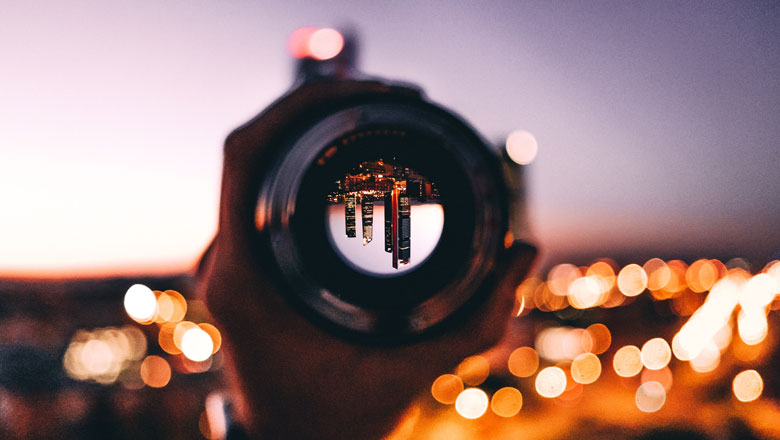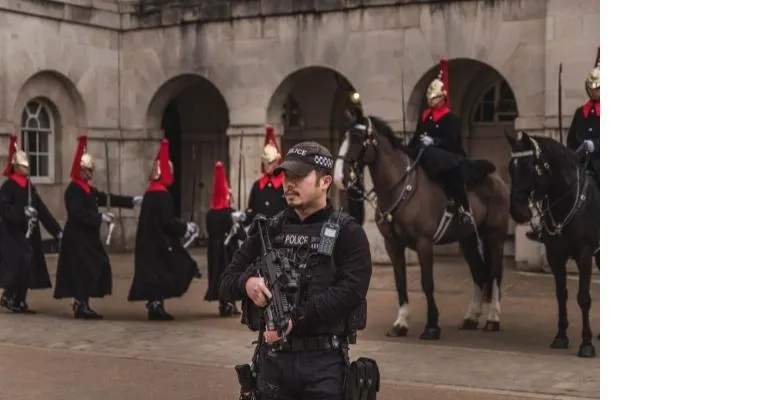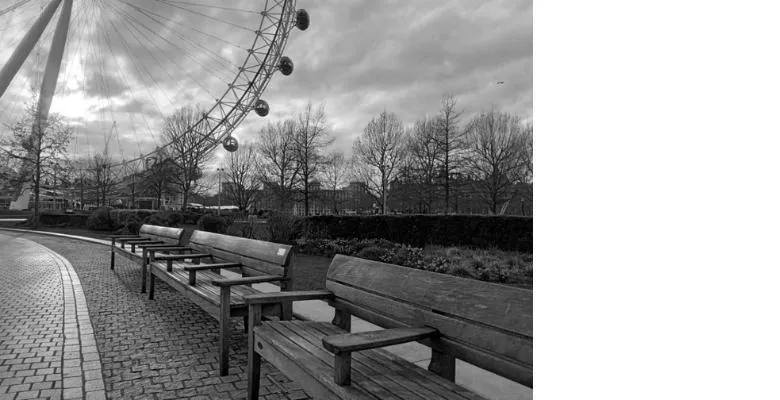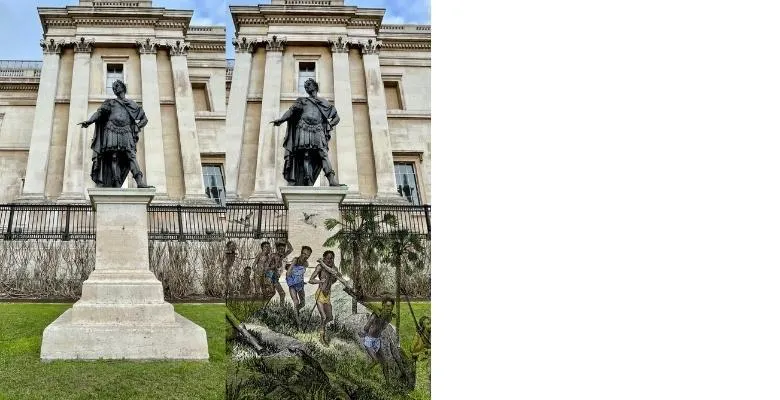26 May 2022
'Ideas of Nation' photography competition tells stories 'excluded from conceptions of Britishness'
A photography contest from the Department of Comparative Literature for undergraduate students reveals silenced and marginalised voices in the construction of British national identity.

The Department of Comparative Literature - within the Faculty of Arts & Humanities - recently launched a Photo Award 2022 for the students registered in the module ‘Ideas of Nation’. Module leader Dr Sara Marzagora, and Graduate Teaching Assistants, Beth Potter and Sangeeta Bhagawati, encouraged students to walk around London taking photos that represent what has been silenced or marginalised in the construction of the British national identity.
The photography exercise allowed students to apply Edward Said's method of “contrapuntal reading” to London as an ‘urban text’ to tell those stories that have been excluded from dominant conceptions of Britishness: what is absent from the official nationalism? What has been hidden? The students were encouraged to think about the poetics of absence: how do we capture those absent voices, stories and people with a camera?
The students demonstrated their commitment to this contest by capturing the juxtaposition between the mainstream image of London and the systematic marginalisation of people and communities hidden from view. Each student was allowed to submit up to four photos. Here is a selection of pictures from the winners and runners-up that showcase the diversity of this project.

Eszter Bán, BA Comparative Literature (Joint winner)
“In this picture past and present clash, an encounter easily juxtaposed to that of the traditional British identity and its constant flux. I was moved by the irony in the way the policeman – who, given his different background, most probably would not have formed a part of the British national self-consciousness at the time the Queen’s Guard had been founded in the 17th century – now stands guarding with high-tech rifles this group of people preserving a rather outdated symbol so important for the British identity.”

Phoebe Smart, BA Comparative Literature (Joint winner)
Phoebe says: "I wanted to focus my photographs on the covert (and therefore arguably more sinister) methods in which the homeless are "written out" of the city, to raise awareness of them and give the public the tools to be able to read these "slippages" within the text of the city. I wanted there to be a lack of the homeless in my photographs despite them being the focus of the images, as I think their absence was important in capturing and demonstrating Edward Said's "poetics of absence"."

Suhani Acharya, BA Comparative Literature with Film Studies (Runner-up)
Suhani says: "Kill the bill-The slogan kill the bill in this context is in reference to the nationality and borders bill. The amendments to this bill aim to discourage and practically stop entering the UK to seek asylum through irregular means. The Bill can be seen as the UK shutting their doors to every refugee that might need a safe space to be, fleeing a country which is infested with terror and war. The juxtaposition of the 'Kill the Bill' flag and of the Big Ben inspired me to send this photo in. The Big Ben is a symbol of the grandness of British achievement. The fact that citizens of this country need to protest racist and discriminatory policies such as these only brings shame on the country. It depicts the lows that this government could stoop to. Hence, the juxtaposition of something which is crowned as the epitome of British excellence in the backdrop of something which only brings shame upon Britain is highly interesting in this photo."

Sasha Eremenko, BA Comparative Literature (Runner-up)
Sasha says: "Please Take One - this was unplanned and symbolises that despite Britain's role in WW1 and WW2 playing a significant part in conceptions of Britishness and in the construction of British nationalism, Britain's many failures to support other countries (poignantly conveyed by the placard 'UK, deliver on your promise' held by one of the protestors) remains absent in the aforementioned conceptions of Britishness. Despite more people join protests urging the government to intervene in support of Ukraine and news headlines growing progressively more shocking ('Annihilation, Evening Standard, March 3rd) the government is still dragging its feet to avoid committing to help Ukrainians. The people affected by the war are talking, but so far, the government isn't listening. I chose to blend four photos together to create two to symbolise two sides of each narrative and highlight the disparity between what is portrayed as 'Britishness' and what is excluded from the construction of British national identity."

Chiara Spaziani, Study Abroad Exchange (runner-up)
Chiara says: "Considering the socio-political implications of the 2015 protest arisen around the statue of former imperialist Cecil John Rhodes at the University of Cape Town, I began thinking whether something similar had ever occurred here. Sauntering close to the Sainsbury wing of The National Gallery, my reasoning came to be correct, as I found my muse in a rather bizarrely dressed man named none other than king James II of England. It came to my knowledge that ‘in 1660, before he became king, James Stuart was a founder of the Royal African Company, which sent more than 200,000 African slaves to the Americas. The two pictures that I have here presented aim to showcase a contrapuntal reading of one of the most famous London landmarks. The first one depicts the subject just like you would find him were you to stand in front of The National Gallery right now, whereas the second one intends to represent the innumerable victims that were subjugated to his command, so to highlight the fact that the glorious image he seems to embody was achieved at the expense of innocents’ blood."
